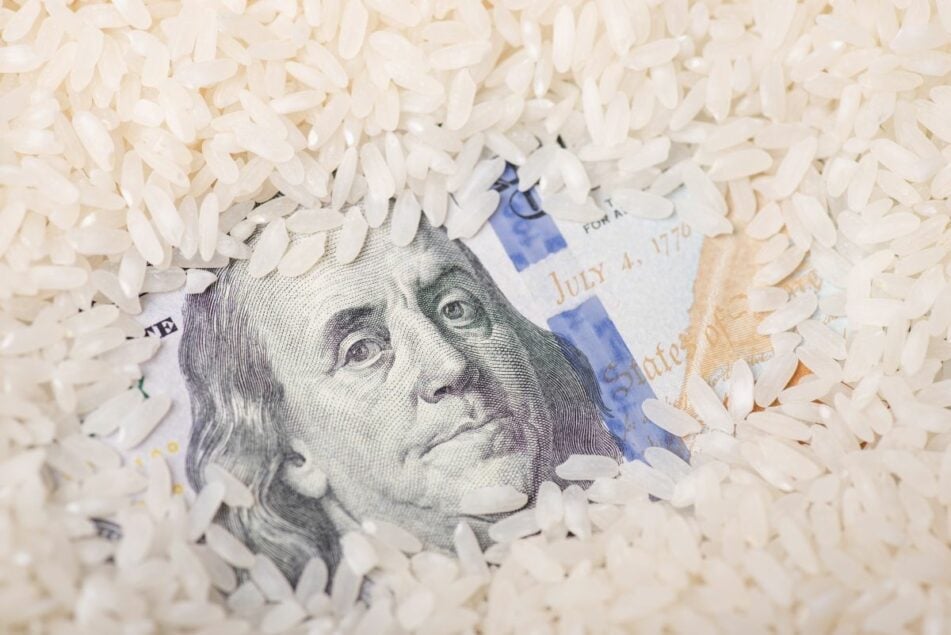November 27, 2025 | 19:10 GMT +7
November 27, 2025 | 19:10 GMT +7
Hotline: 0913.378.918
November 27, 2025 | 19:10 GMT +7
Hotline: 0913.378.918

Tariffs could reshape U.S. rice prices. Photo: FBN.
White House officials said that, beginning April 9, all Thai rice imports to the U.S. will face an additional tariff of 36%. The U.S. is the Western Hemisphere’s largest rice buyer, and since the mid-1980s Thailand has been the country’s leading foreign supplier of rice, especially aromatic varieties, according to the U.S. Department of Agriculture’s Economic Research Service.
Last year, Thailand shipped almost 850,000 tonnes of rice to the United States, nearly three times as many as India, the nation’s second-largest foreign supplier. Third was Vietnam, followed by Pakistan. As part of its tariff announcement, the White House also added tariffs on those countries: 26% for India, 46% for Vietnam and 29% for Pakistan.
Taken together and measured against those nations’ share of total US rice imports last year, the foreign rice supply now faces an average added tariff of more than 33% beginning April 9. In particular, more than 60% of U.S. rice imports are aromatic varieties, including jasmine and basmati that domestic producers generally do not grow. Overall, foreign rice imports make up more than one-fifth of US usage.
The White House also added a combined tariff rate of 54% on imports from China, a key supplier of short- and medium-grain rice to Puerto Rico.
Domestically, the U.S. produces about 80% of the rice it uses, according to the USA Rice Federation, and is the world’s fifth-largest rice exporter. Most U.S. rice is grown in the Southeast, Gulf Coast and on the West Coast.
Last year, the top export market for U.S. rice was Mexico, followed by Central America, Haiti, Japan and Canada, according to USDA data. The White House spared Mexico and Canada from new tariffs in its April 2 announcement, and US rice trade with those countries currently is exempt under the United States-Mexico-Canada Agreement, making any retaliatory tariffs unlikely to impact exports there. Most Central American nations and Haiti are now subject to the new 10% minimum tariff, while Japan received an added tariff of 24%. Retaliation from those nations could disrupt some U.S. rice exports, though Central American and Caribbean nations that rely on US rice for food security are unlikely to retaliate.
As noted in the USDA’s March Grain: World Markets and Trade report, world rice prices overall declined from March 2024 to March 2025 by anywhere from 10% to 40%, while global rice production reached a record high.
“This was an unexpected development in terms of scope, and we’ll see where it goes,” a U.S. rice industry source said. “On the one hand, you could see prices of imported rice varieties rise by a third or more, but on the other hand there is some opportunity here for domestically produced varieties to fill some of the void. What these tariffs do more than anything is create uncertainty, and uncertainty by nature is difficult to plan for.”
foodbusinessnews

(VAN) China’s cooking oil is suddenly flooding into India. It all comes down to a soybean surplus that Beijing doesn’t quite know what to do with.

(VAN) An Giang promotes supply-demand connections, standardizes quality and builds value chains, creating a foundation for sustainable bird’s nest development and aiming to expand exports.
/2025/11/24/5339-4-nongnghiep-075331.jpg)
(VAN) Recently, the conference on 'Sustainable Fisheries Linkage Chain - Tilapia for Export' took place in Tien Hai commune, Hung Yen province.
/2025/11/21/4309-2-153400_128.jpg)
(VAN) Green and low-emission rice is paving the way for Vietnamese rice to enter high-end markets, marking the beginning of a transformation journey toward greening and elevating the national rice brand.

(VAN) ‘Right to Win’ outlines a national action plan that shapes a new vision for Viet Nam’s agriculture in an era of renewal and global integration.

(VAN) Lam Dong’s farmed sturgeon output this year is expected to reach 2,300 tons, worth VND 450 billion, affirming the brand’s position on the market.

(VAN) A surge in Ukrainian egg exports, largely driven by soaring sales to the UK over the last few years, has notably pushed up egg prices on the domestic market.